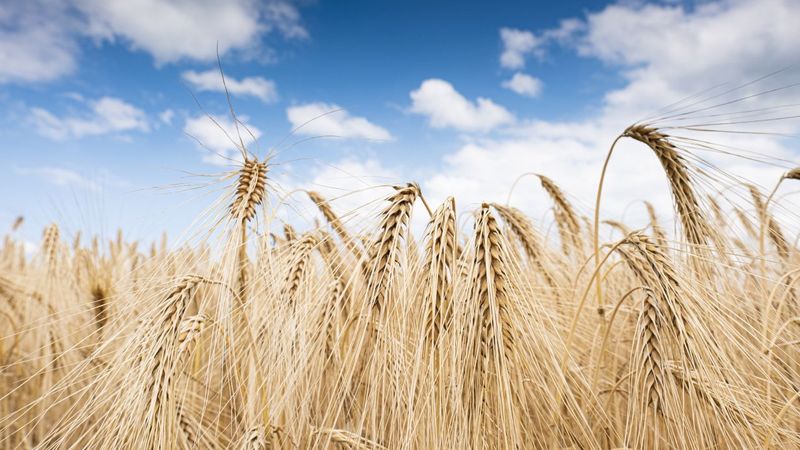More sustainable agriculture through global redistribution of nitrogen fertilizer
Models show that an even global distribution of nitrogen fertilizer could significantly reduce total global fertilization and the resulting environmental impact

Growing grain worldwide requires a high level of nitrogen fertilizer use. KIT researchers show that global redistribution would have a positive impact on the environment. (Photo: Markus Breig, KIT)
This article was first published on
www.kit.eduThis article originally appeared in Karlsruhe Institute of Technology and has been republished with permission.
A growing world population needs sufficient food. Their production leads to increased nitrogen pollution in agriculture due to over-fertilization, which has a negative impact on people, the climate and ecosystems. Models from researchers at the Karlsruhe Institute of Technology (KIT) show that current grain production could be maintained with significantly lower global fertilization if the use of nitrogen fertilizer were distributed evenly across cultivated areas worldwide. They report their results in Communications Earth & Environment (DOI: 10.1038/s43247-023-00970-8 ).
Around 60 percent of the world's nitrogen fertilizer use currently occurs in grain crops such as corn, wheat and rice. These need nitrogen fertilizer to grow and increase their yields. However, large amounts of the fertilizer end up in the soil and groundwater or are released into the atmosphere as nitrous oxide. They pollute the environment and contribute to the loss of biological diversity, climate change and the depletion of the ozone layer. This is particularly problematic in the large growing areas in North America, Europe and East Asia, where comparatively large amounts of nitrogen fertilizer are used. KIT researchers have now modeled what effects a global redistribution of nitrogen fertilizer use would have. To do this, they simulated different amounts of fertilizer at different locations and used the LandscapeDNDC biogeochemical model to calculate the total production of corn, wheat and rice between 2015 and 2030. “The background to our investigations was the question of how we can produce enough food without exceeding ecological limits.” says Dr. Andrew Smerald from the Institute for Meteorology and Climate Research - Atmospheric Environmental Research (IMK-IFU), KIT's Alpine Campus in Garmisch-Partenkirchen.
Grain production levels could be maintained with significantly lower global fertilizer use
“Our models show that global total nitrogen fertilizer consumption could be reduced by 32 percent through more even distribution without affecting current levels of grain production,” said Smerald. “This works by redistributing nitrogen fertilizer from traditional growing areas such as China, North America and Europe to less used areas such as sub-Saharan Africa.” The increase in production in these regions then offsets the decline in production in other regions. With this approach, wheat and corn production could use 45 percent and 33 percent less nitrogen fertilizer, respectively, without affecting global production levels. At the same time, nitrate leaching could be reduced by 71 percent in wheat and by 63 percent in corn.
“Our study shows that a more even distribution of nitrogen fertilizer across global cropland would reduce dependence on current breadbaskets and reduce nitrogen pollution in East Asia and other heavily fertilized regions,” says Smerald. Another advantage would be that crops could often be grown closer to where they are needed. For example, an increase in crop yields in Africa would bring the continent closer to self-sufficiency.
Original publication
Andrew Smerald, David Kraus, Jaber Rahimi, Kathrin Fuchs, Ralf Kiese, Klaus Butterbach-Bahl & Clemens Scheer: A redistribution of nitrogen fertilizer across global croplands can help achieve food security within environmental boundaries. Communications Earth & Environment, 2023. DOI 10.1038/s43247-023-00970-8. https://www.nature.com/articles/s43247-023-00970-8
